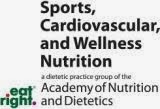The holidays are a time of gathering while fighting weight
gain. Those of us who are “dog parents”
are more likely to exercise and meet the federal criteria for regular exercise.
As we are approaching that time of year, our homes welcome
in visitors or we are guests at someone else’s home. By the time you sit down, you may be welcomed
by an eager canine who wants a treat.
The American Society for the Prevention of Cruelty to Animals (ASPCA) has holiday recommendations that you and your guests should
heed when it comes to Fido’s safety.
The Society recommends avoiding the following:
Chocolate—may cause vomiting, fever, seizures, abdominal
pain, and possibly death.
Grapes and raisins—are associated with kidney failure with
some dog breeds.
Macadamia Nuts—can cause tremors, weakness, and fever.
Onions, garlic, shallots, and scallions—these aromatics can
damage red blood cells.
Raw bread dough or raw cake batter—will cause pain and
bloating to the animal and may require surgery.
Regarding cake batter, dogs can become sick from salmonella.
Turkey—a few small boneless pieces of cooked turkey, may not
cause a problem but don’t allow your dog to eat too much as it can cause
Pancreatitis.
Try your best to keep your dog (and maybe yourself too) on a
normal diet during the holidays. If
you’re feeling guilty, consider giving your pet a new chew toy or take them for
an extra-long walk to tire them out before guests arrive. When in doubt, don’t feed dogs table
scraps. If your new four legged friend
is guilt tripping you, ask the host for a dog approved treat to give.
Gina (Lesako) Volsko is a Columbus, Ohio based RD and the SCAN blog coordinator. Contact her at glesako@gmail.com to be a SCAN blogger. You can find her blogging at Sport2Fork.





